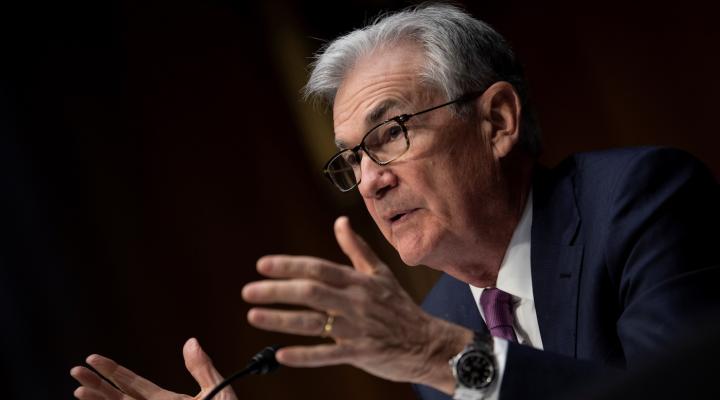Will We Get Inflation, Recession, or Stagflation? Or Is the Fed Pulling Off a Miracle?

In theory, Jay Powell and the rest of the Fed’s Open Market Committee (FOMC) face an impossible task: Inflation is raging, with the headline annual inflation rate hitting 9.1% in June, the highest level in forty years. The obvious prescription for that economic sickness is rate hikes, but that carries its own danger. So far this year, there have been two consecutive negative prints of GDP, and hiking rates in that situation risks a damaging recession. You can pick your cliché, but it seems that the Fed are up the creek without a paddle, between a rock and a hard place, or in danger of jumping out of the frying pan and into the fire.
And yet some markets are now suggesting that they are getting it right, and that the oft-talked-of soft landing is a real possibility.
That is certainly true in the stock market, where the S&P 500 is around fourteen percent above the low a month or so ago, but other markets are sending strong vibes too. Oil and other commodities have come off their highs, and risk assets such as bitcoin and meme stocks have bounced back. Even the dollar’s “safe haven” rally looks like it may be over. So, has the Fed pulled off a miracle, or are we headed inexorably towards recession?
The real answer, as unsatisfying as it is in these days of instant and often completely uninformed judgement, is that it is too soon to tell.
The uncertainty comes from the fact that there is one indicator that is not looking at things with such optimism and, as an old-school market guy, it is the one I usually trust the most: the yield curve, which shows market expectations for interest rates in the future. In April of this year, the yield curve inverted, meaning that longer-term, market set interest rates moved higher than those in the short-term, and the inversion has gotten worse since. 2-Year Treasuries are currently trading more than forty basis points above the 10-Year, the biggest spread since 2000.
Typically, that is a bad sign because central banks cut rates when the economy is slowing dramatically, so it signals an expectation of recession by the big, smart money in the bond market.
And yet last week, we saw another strong jobs report for July, and one of the biggest problems for businesses right now is hiring staff. That hardly sounds like a recession, an economic condition marked by mass unemployment as the economy slows. That is why some are pointing out that a recession is not defined as two consecutive quarters of negative GDP growth, which had been the general rule of thumb, but must include other things too, like high unemployment and falling wages. I covered this subject a little more in a recent piece, but the short version is that a recession only comes when the National Bureau of Economic Research says there's a recession, and that hasn't happened yet.
All in all, this economic picture we're looking at right now looks like something different, something that hasn’t been talked about for four decades or more: stagflation. Stagflation is when the economy is stagnating, even as inflation is a problem. That aptly describes what we are seeing right now, and it would be very bad news if it were to continue.
The markets, however, are pointing to another explanation as they receive more data: Yield curve inversion, a strong labor market, falling commodity prices, and strength in stocks, could all be happening simultaneously if the markets believe that the Fed is getting it right, that it can raise rates to bring prices back in check, then reverse those hikes quickly to stimulate growth. In other words, a soft landing.
Until last week’s jobs report, what we have seen over the last month in the stock market appeared to be a bear market rally that would be followed by another big leg down, probably during the fall. To be clear, that is still a possibility, but by no means certain. There is a good chance that we haven’t just seen the bottom for stocks, but that the market can rally back strongly and be challenging the highs again before the year is out.
The views and opinions expressed herein are the views and opinions of the author and do not necessarily reflect those of Nasdaq, Inc.
